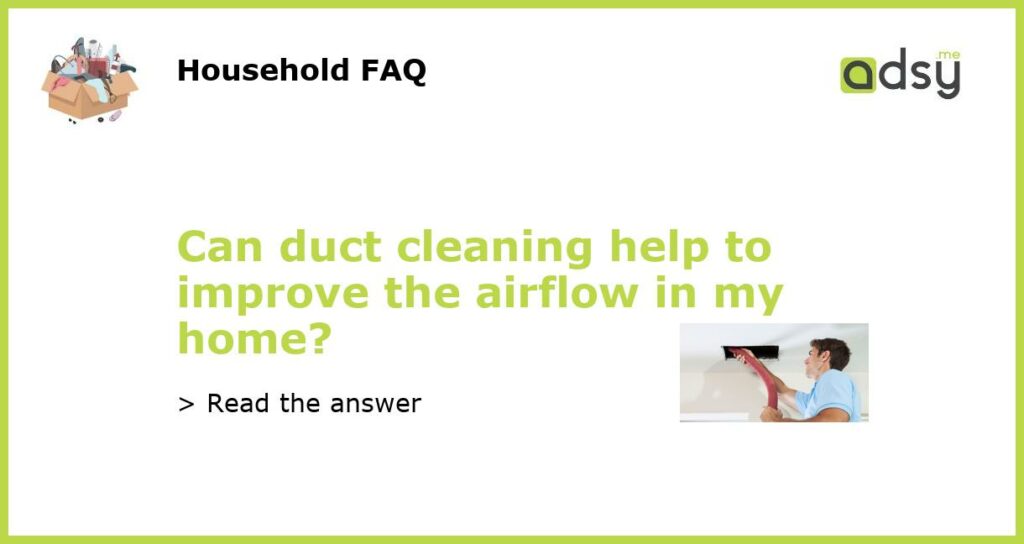What is duct cleaning and how does it work?
Duct cleaning is the process of removing dust, debris, and other contaminants from the HVAC system’s ductwork. This includes the supply and return air ducts, as well as the registers and grilles in each room. Professional duct cleaning companies use specialized tools and equipment, such as high-powered vacuums and brushes, to thoroughly clean the ducts.
The process usually involves the following steps:
- Inspection: A trained technician will inspect the HVAC system to determine the extent of the cleaning required.
- Cleaning: The technician will use powerful vacuums and brushes to dislodge and remove dirt, dust, and debris from the ducts.
- Sanitization: In some cases, the technician may use sanitizing agents to kill bacteria and mold that may be present in the ducts.
- Sealing: After cleaning, the technician may seal any leaks or gaps in the ductwork to prevent air leakage.
Can duct cleaning improve airflow?
While there is no scientific evidence to prove that duct cleaning directly improves airflow in a home, clean ducts can indirectly contribute to better airflow. When the ducts are clogged with dust, debris, and other contaminants, the air may not flow freely through the system, reducing the efficiency of the HVAC system.
By removing these obstructions through duct cleaning, the airflow can potentially improve. However, it is important to note that there are other factors that can affect airflow, such as the condition of the HVAC unit itself, the quality and design of the ductwork, and even the layout of the home.
Other benefits of duct cleaning
While improving airflow is one of the potential benefits of duct cleaning, there are other advantages to consider:
- Improved indoor air quality: The buildup of dust, debris, and other contaminants in the ducts can contribute to poor indoor air quality. Cleaning the ducts can help remove these allergens, potentially reducing allergy symptoms and respiratory issues.
- Energy savings: When the HVAC system is clogged with dirt and debris, it has to work harder to maintain the desired temperature, resulting in higher energy consumption. By cleaning the ducts, the system can operate more efficiently, leading to potential energy savings.
- Extended HVAC system lifespan: A cleaner system is less likely to experience breakdowns and malfunctions. Regular duct cleaning can help prolong the lifespan of your HVAC system, saving you money on repairs and replacements.
When should I consider duct cleaning?
Duct cleaning may be beneficial in certain situations:
- Visible mold growth: If you can see mold growth inside the ducts or on other components of the HVAC system, it is important to have it professionally cleaned.
- Excessive dust or debris: If you notice an excessive amount of dust or debris coming from the vents, it may be a sign that the ducts need cleaning.
- Renovations or remodeling: If you have recently completed renovations or remodeling work in your home, duct cleaning can help remove construction debris and particles.
- Allergy or respiratory issues: If there are individuals in your household who suffer from allergies or respiratory problems, duct cleaning may help reduce their symptoms by removing allergens and irritants from the air.
Duct cleaning is a process that involves removing dust, debris, and other contaminants from the HVAC system’s ductwork. While it may indirectly help improve airflow by removing obstructions, other factors can also affect airflow in a home. However, duct cleaning offers other benefits, such as improved indoor air quality, energy savings, and extended HVAC system lifespan. It is recommended to consider duct cleaning in specific situations, such as visible mold growth, excessive dust or debris, renovations or remodeling, and allergy or respiratory issues. Consulting with a professional duct cleaning company can help determine if duct cleaning is necessary for your home.

